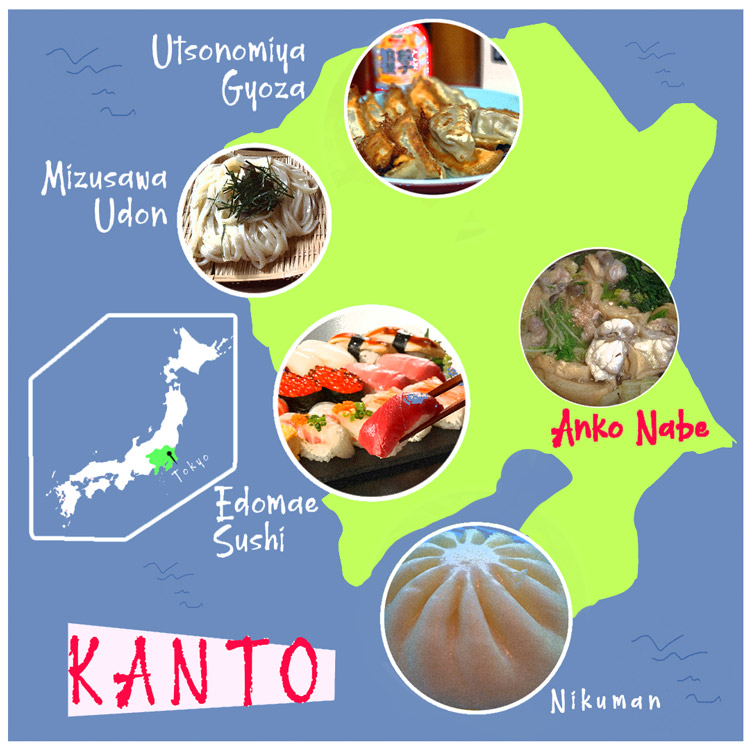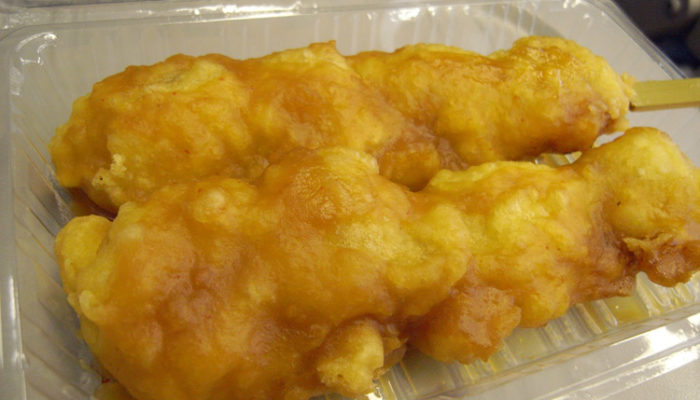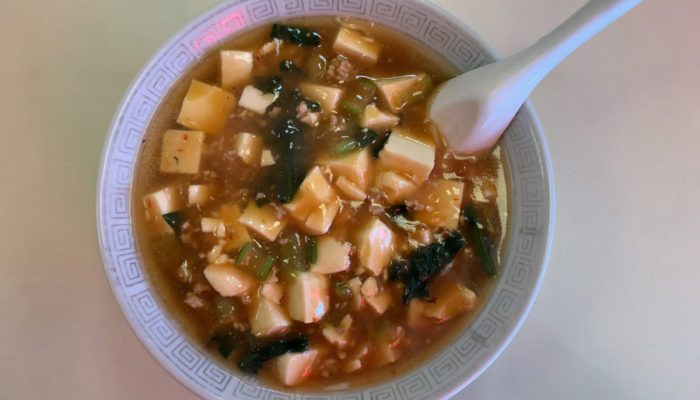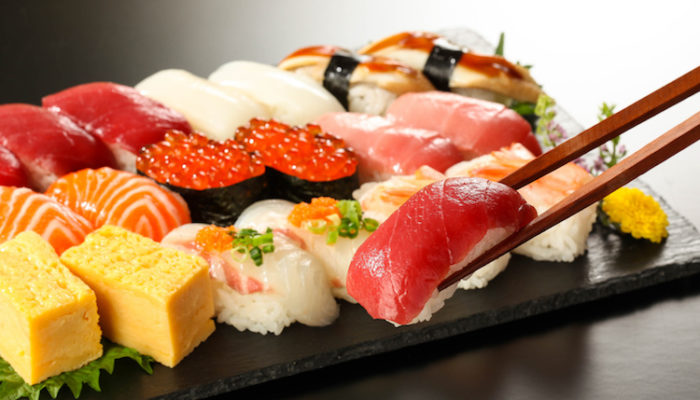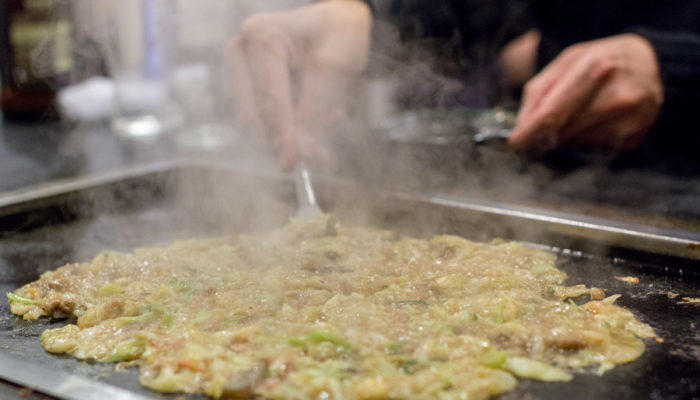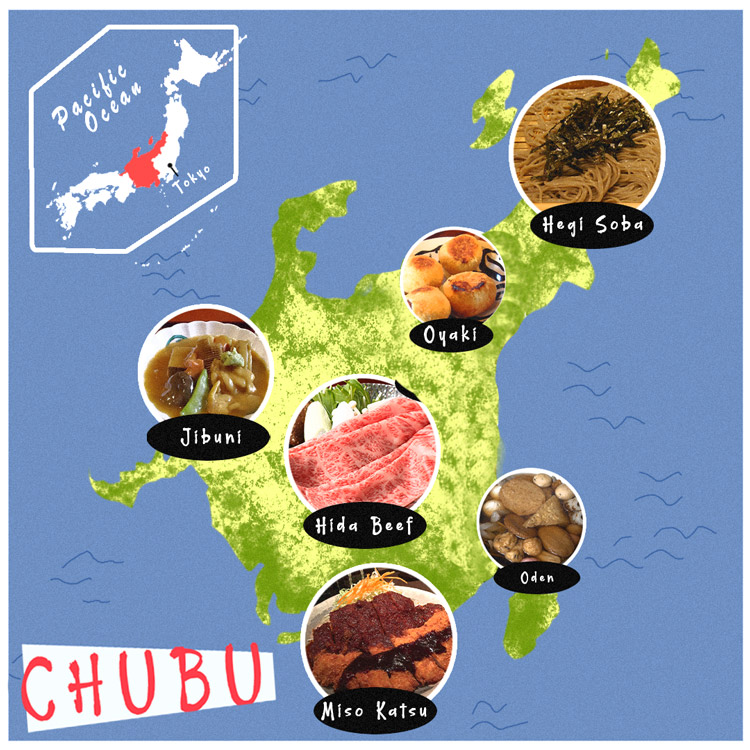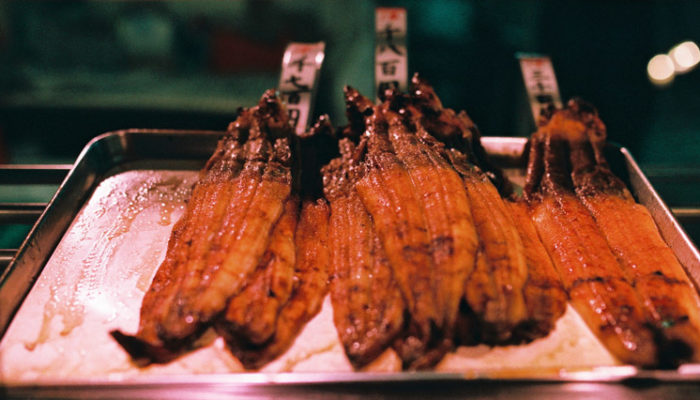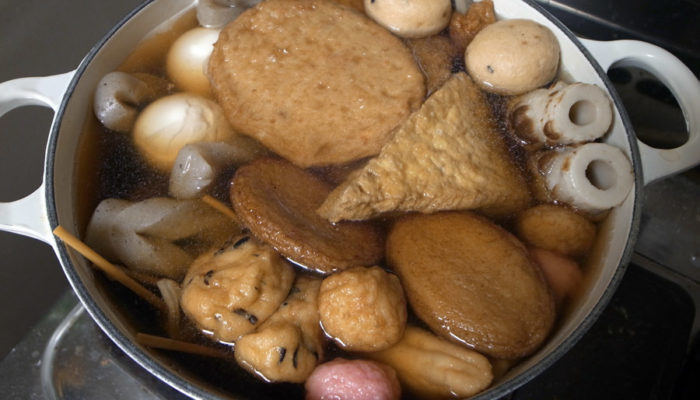Japan is a food haven — that is, quite simply, a fact. But did you know that it was so much more than just sushi, ramen, katsu curry and miso soup? These dishes are amazing, yes, but they are only the tip of a very, very big iceberg. So here at Nakama, we thought we’d try to give a proper tour of Japanese food, as we work our way across a map.
Japan has 47 prefectures, which can be grouped into eight regions. The regions are: Hokkaido, Tohoku, Kanto, Chubu, Kansai, Chugoku, Shikoku, and Kyushu. Without further ado, let’s dive straight in.
Hokkaido Food Map
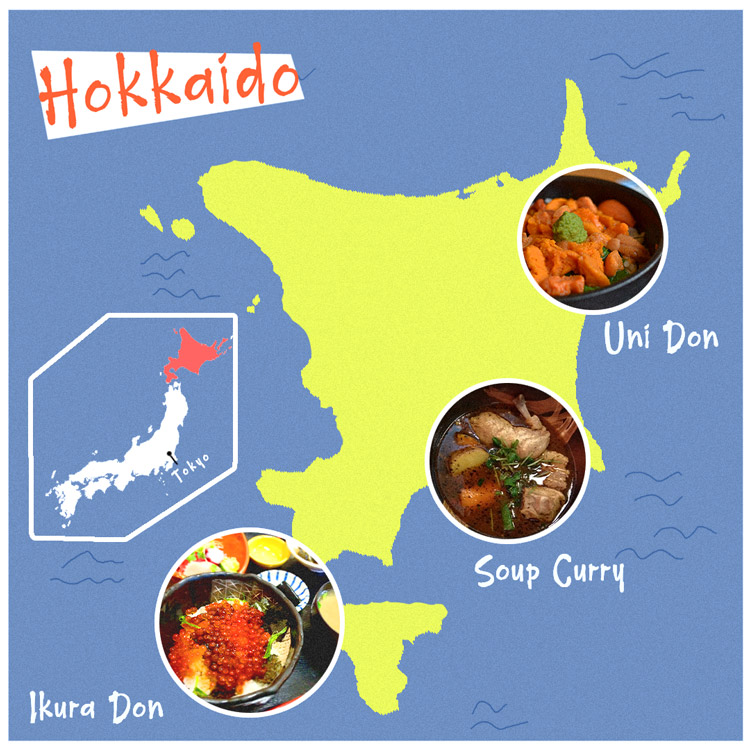
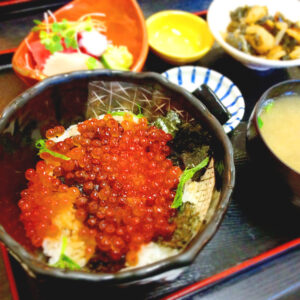
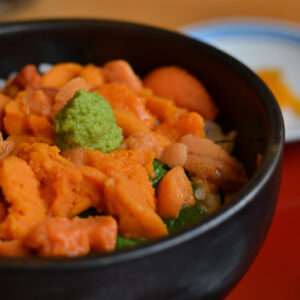
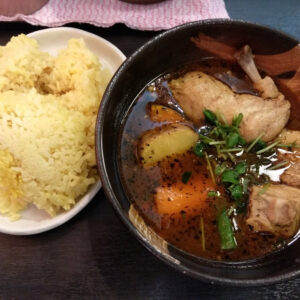
Hokkaido is an island in the north of Japan. As it is surrounded by the Sea of Japan, Sea of Okhotsk and the Pacific Ocean, the seafood in Hokkaido is known to be particularly fresh and impressive. While ikura (salmon roe) and uni (sea urchin) are firm favourites to serve as donburi (i.e., over a bed of rice), kaisendon (seafood donburi) is also very popular, allowing a variety of seafood including scallops, shrimp and crab meat to be enjoyed along with the aforementioned toppings.
A dish worth mentioning comes from Sapporo, the largest city on Hokkaido, is the soup curry. Unlike the traditional Japanese curry which is thicker and poured over rice, the soup curry is much lighter — literally, a soup, meant for the rice to be dipped in. Being the northernmost part of Japan where temperatures tend to be a bit lower, the popularity of this may have come from the ease of having a warm, yet light bowl of curry.
Tohoku Food Map
Aomori, Iwate, Miyagi, Akita, Yamagata, Fukushima

Aomori
Moving down the map, we come to Aomori, which is situated in the northernmost part of Honshu (the main island of Japan).
Two of Aomori’s regional dishes actually come from a time when rice was a luxury — Kenoshiru and Senbei-jiru.
Both are forms of soup: In Kenoshiru, a variety of vegetables such as radish, carrots, burdock roots and more are diced finely and added to a broth to form the texture of rice, effectively making a kind of porridge; in Senbei-jiru, wheat crackers called “senbei” are added to a broth.
Although rice is no longer scarce in Japan, these dishes have stayed with the people of Aomori till the present day.
Iwate
When it comes to Iwate, the most famous dish of all is, of course, the Wanko Soba.
The word “wanko” refers to a small bowl, which is filled with a small serving of soba noodles.
In the wanko soba challenge, available in some restaurants in Morioka in Iwate, diners are invited to an “all-you-can-eat” challenge where a server stands next to them and refills their bowl immediately once it has been consumed.
All the bowls are stacked together and counted at the end of the challenge.
Apart from Wanko Soba, the two other popular noodle dishes in Iwate have roots in other countries, including The Morioka Jaja-men (a thick noodle served with meat miso, originating from China), and the Morioka Rei-men (a cold noodle dish served in cold broth and kimchi, similar to the Korean neng-myun).
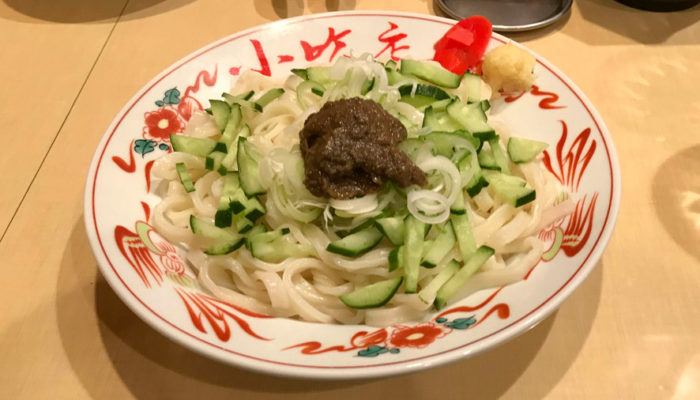

Miyagi
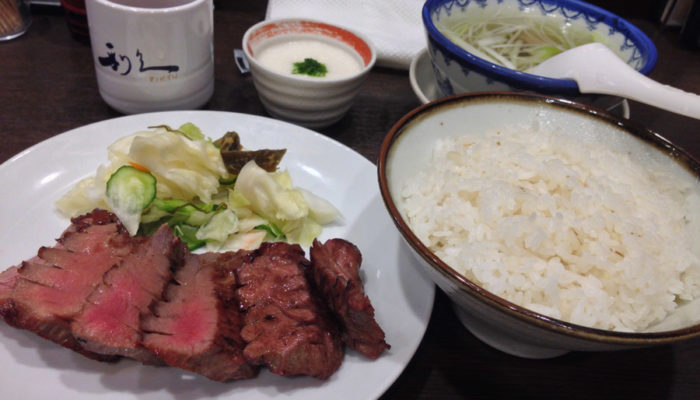
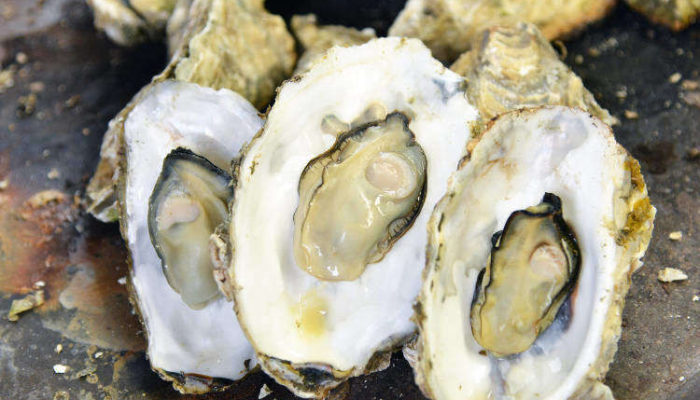
The most famous dish coming out of Miyagi is probably the Gyu-tan yaki (grilled beef tongue). With a chewy texture and marinated with sauce, cooked over a grill, beef tongue is perfect to go with a bowl of rice. Miyagi is also one of the biggest producers of oysters in Japan. In Matsushima, one can expect to find all-you-can-eat grilled oyster buffets. Japan is truly a haven for the food lover.
Akita
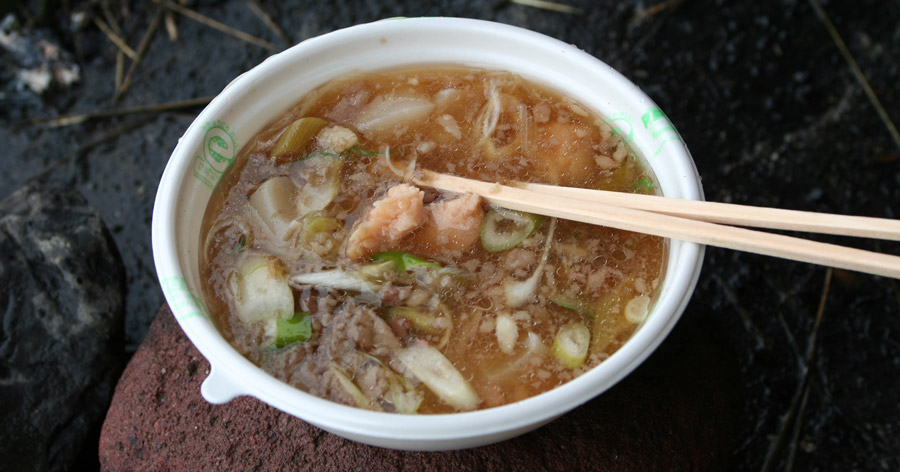
Imoni is a local soup of Yamagata, consisting mainly of taro and meat, konjac and green onions.
Traditionally, this is eaten in the autumn, where residents come together to enjoy the food.
Konjac seems to be popular in Yamagata, because tamakon is also a local dish of Yamagata, where little balls of konjac are simmered in a dashi broth containing soy sauce, and eaten with mustard.
Yamagata
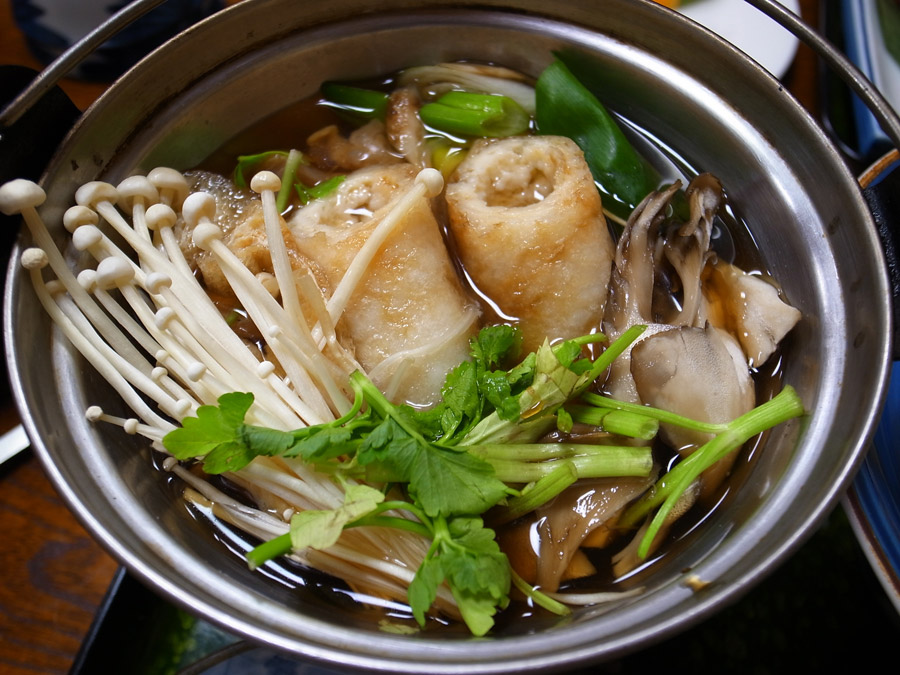
Apart from being the origin of the strong, loyal and beautiful Akita dog,
Akita is also home to the Hinai chicken, said to be one of the three most delicious types of chicken in Japan.
Here, one can expect to find delicious dishes made from local chickens, such as in the form of yakitori skewers, or oyakodon (chicken and egg bowl), or the famous Kiritanpo-nabe.
Kiritanpo-nabe, a type of hot pot containing a mixture of vegetables and Hinai chicken, is most easily identified by the kiritanpo, a type of skewer that is made by crushing cooked rice and molding it into little lolly-looking sticks.
Fukushima
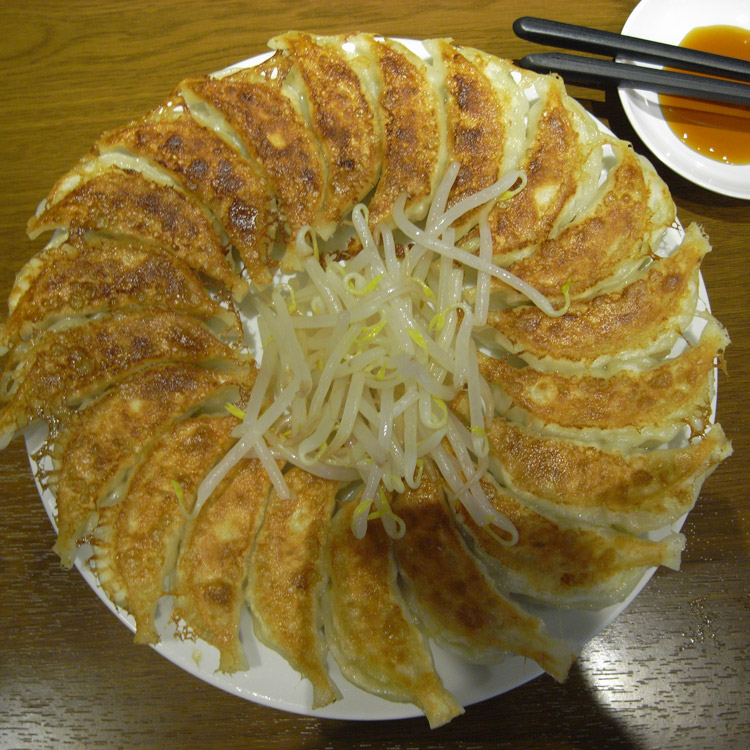
It’s been said that when one goes to Fukushima, one must try their Kitakawa ramen.
Characterised by its clear, light soy-sauce base broth, some locals even have it for breakfast!
Another Fukushima speciality, Enban gyoza, are dumplings that are traditionally served in a “disc” shape.
You literally get a “disc” — a plate — full of gyoza, perfect to have with beer!
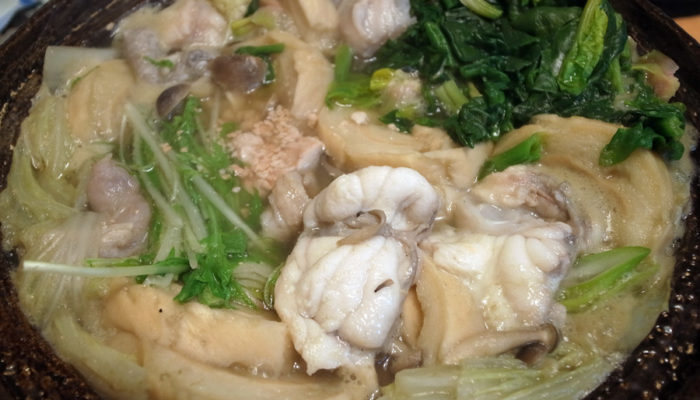

If you haven’t had monkfish before, the Anko-nabe (monkfish hot pot) is certainly one to try in Ibaraki. The anko-nabe is Ibaraki’s famous winter dish, where most parts of the fish, including the skin, stomach, gills and other parts are consumed.
Did you know? Natto (fermented soy beans), a Japanese specialty, also comes from Ibaraki. Its smell is pungent, but is often known for its health benefits and eaten as a side dish with breakfast in Japan.
You could also describe natto as the “marmite” of Japan — it’s often said that you would either hate it or love it.
Tochigi
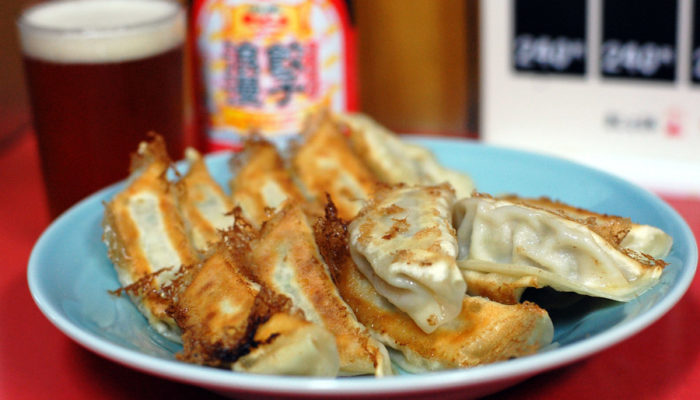
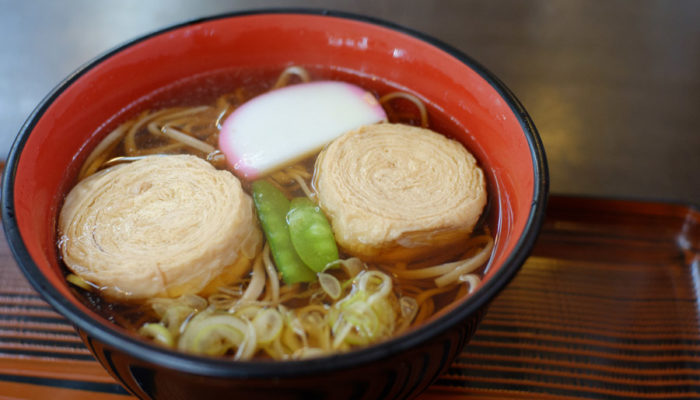
Once again, dumplings come up in our list in the form of Utsunomiya gyoza. In fact, these gyoza are so popular in Utsunomiya that there is a festival every year where you can try the gyoza from different restaurants in the city! Another Tochigi specialty is Yuba, particularly in the city of Nikko. Yuba is made by pulling up a thin film of soy milk as it is heated, and serves as a good source of protein for the monks who live in the various temples in the area. Gains aside, though, the delicious, soft and silky texture of yuba and its versatility in various dishes (with noodles, jelly or soup) make it worth trying.
Gunma
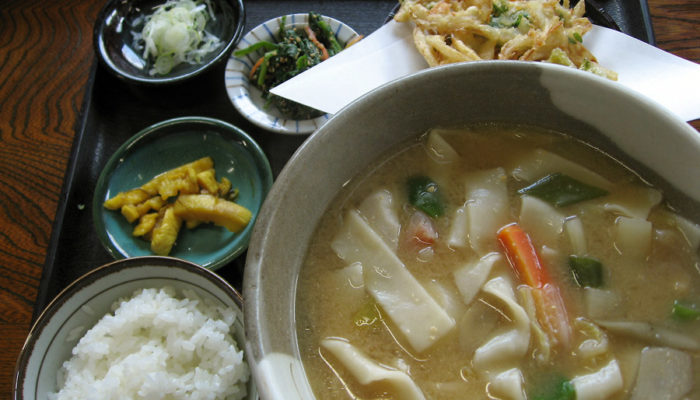
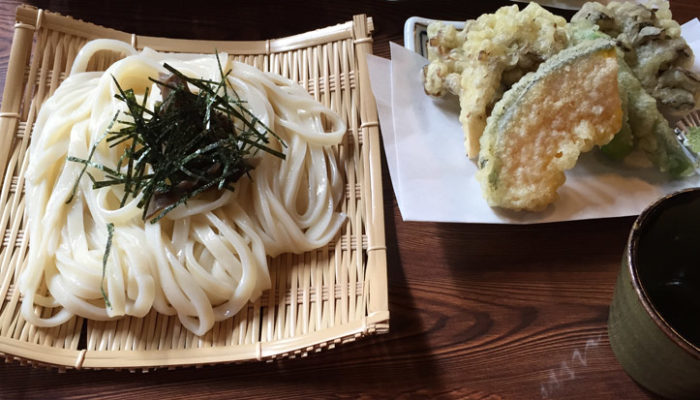
Gunma’s favourite local cuisine is a noodle dish called Okkirikomi, featuring hand-cut flat udon noodles that are added to a broth containing daikon, shiitake mushrooms and lots of other vegetables, in a soy sauce or miso base. This seems to be one of the best ways to experience a unique type of udon. Speaking of udon, Gunma is also famous for Mizusawa udon, one of the three major udon dishes in Japan (along with Sanuki udon and Inaniwa udon). It is often served as zaru udon, where the udon is served on a bamboo sieve with a dipping broth and toppings, allowing one to fully enjoy the chewy texture of the udon. Mizusawa udon used to be offered to worshippers at Mizusawa temple, hence the origin of its name.
Saitama
In Saitama, you can enjoy Miso potato, where balls of crunchy baked potato are coated with a miso paste and served as skewer sticks. It is often eaten as a snack.
Saitama City itself boasts of an original invention — Tofu ramen. Pieces of silken tofu are added to a broth with ramen. A thick, mapo tofu-like sauce with minced meat is then poured over the top, creating a dish that is like mapo tofu in flavour, but lighter and milder in spice.
Chiba
When it comes to Chiba, there is a famous dish that you might want to try — Namero, is a fish dish. Horse mackerel, sardines and the like are mixed with miso and other condiments like green onion and ginger and beaten with a kitchen knife until it becomes sticky.
It might not sound very appetising, but “Namero” in Japanese actually means “let’s lick”, as the dish was so tasty that people wanted to lick the plate!
Another distinctive Chiba dish is the Futomaki Matsurizushi (thick-rolled festival sushi).
Unlike the normal futomaki sushi rolls that are served at sushi restaurants, the cross-sections of these “festival sushi” often display intricate patterns, such as cherry blossoms or plum blossoms.
Tokyo
Everyone knows about Tokyo, but what’s good to eat in Tokyo? First and foremost, there’s Edomae sushi — this refers specifically to sushi made with fish that is caught fresh near Tokyo Bay (“Edo” is just an old word for Tokyo). During the Edo period, new techniques including broiling, deep frying and marinating seafood in vinegar and salt were introduced to sushi to preserve the raw fish for safety. These techniques have shaped what we now know as modern-day sushi, and one of the best places to try edomae sushi is of course no other than the Tsukiji fish market.
Apart from sushi though, there’s also Tsukishima monjayaki. Tsukishima monja is the Kanto counterpart of Kansai’s okonomiyaki. Unlike okonomiyaki, monjayaki uses a runnier batter that consists of dashi stock, but similarly, is cooked on a griddle and uses similar ingredients such as cabbage, various seafood such as squid and prawns, corn, and the like.
Kanagawa
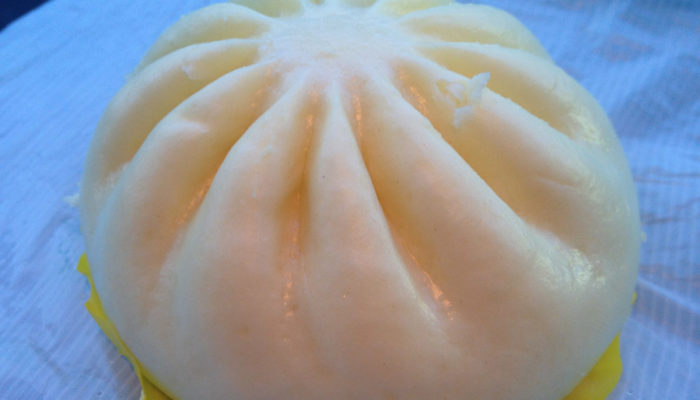
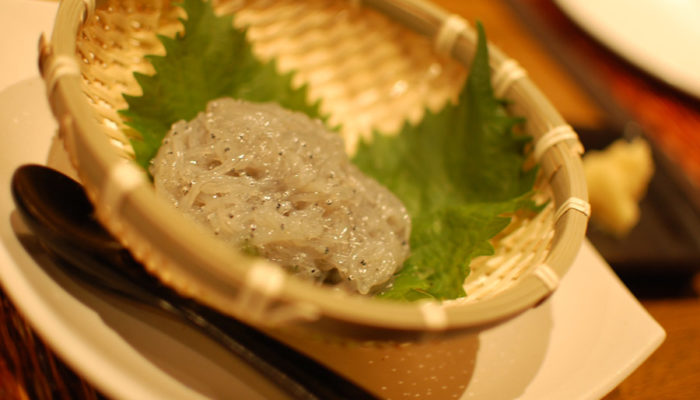
Housing its capital Yokohama, which has the largest chinatown in the whole of Japan, one cannot miss out the Nikuman (meat buns) and Shumai in Kanagawa. If Chinese-influenced dishes aren’t what you’re looking for, there are also a variety of dishes featuring shirasu (whitebait), which are freshly caught off the coast and often enjoyed raw, for example, in a donburi (rice bowl).
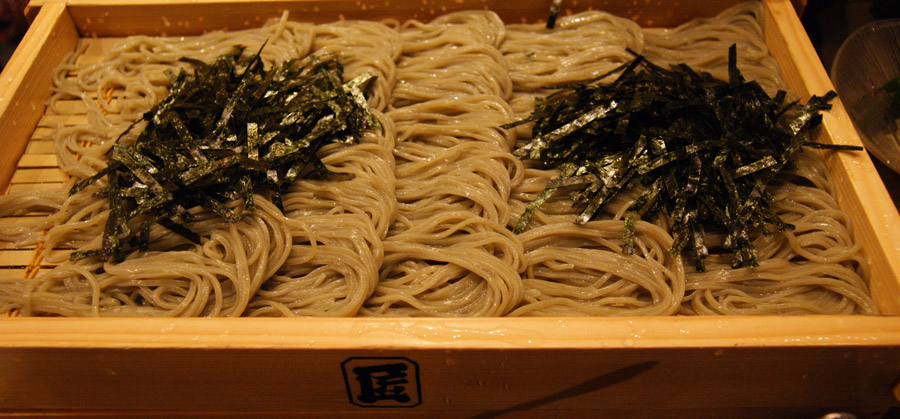
Hegi soba noodles are a famous dish of Niigata. This soba noodle dish is special because it uses seaweed as a binding agent, creating a more chewy and smooth texture.
The origin of its name comes from the fact that the noodles are served in a hegi, a wooden tray in which portions of soba noodles are organised neatly. Each prefecture seems to have their own ways of celebrating, and Niigata is no different when it comes to New Year’s.
Noppe is a traditional New Year’s dish there, and it is a soup made with chicken and seasonal vegetables such as lotus roots, mushrooms, and carrots with thickened with taro.
Toyama
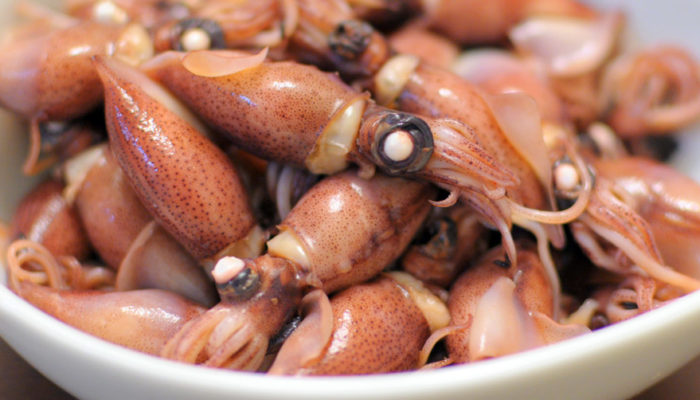
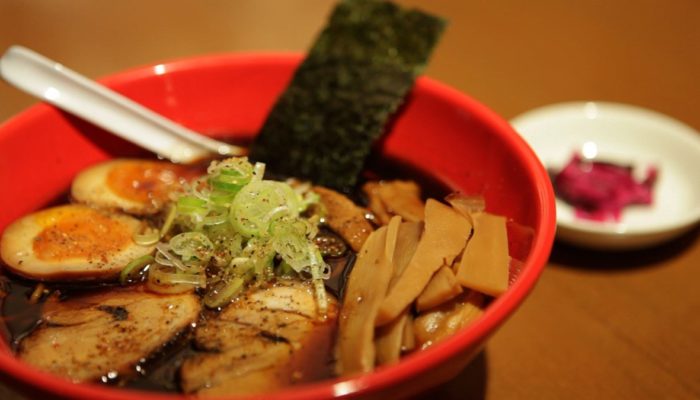
Toyama is home to Toyama Bay, located on the Sea of Japan and one of Japan’s three largest bays. It is sometimes called a “natural cage” and is a treasure trove of abundant fish and shellfish throughout the year.
As such, fresh seafood dishes are a specialty of Toyama, including Shiroebiya (white shrimp sashimi), firefly squid, Masu sushi (a special kind of pressed sushi using bamboo leaves and heavy stones), and cold yellowtail dishes.
In Toyama, specialty noodle dishes can also be enjoyed. For instance, Toyama black ramen is made with dark soy sauce and originally made for workers who had a preference for strong seasoning. Like a lot of other regions, Toyama also has its own special udon, known as Himi Udon.
Ishikawa
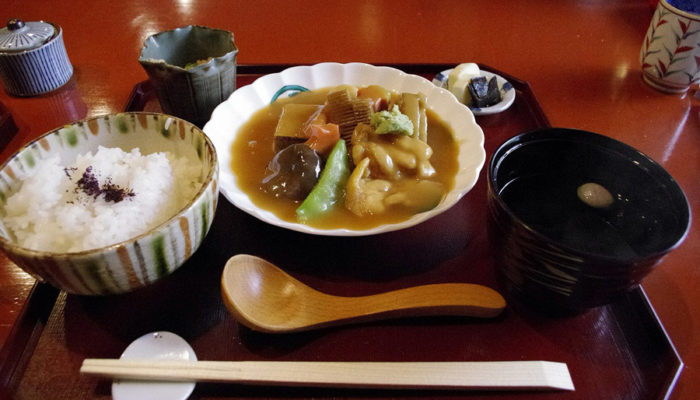
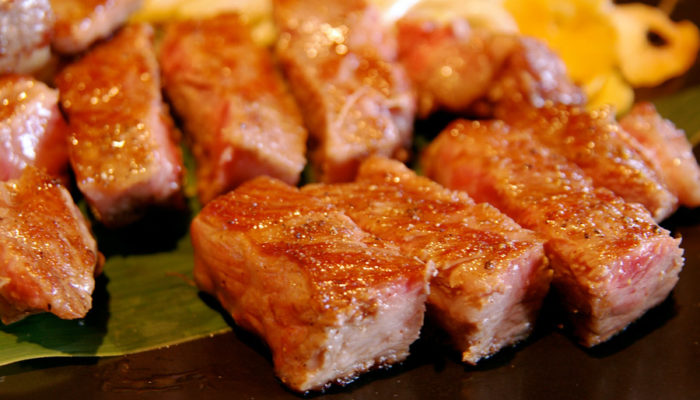
Ishikawa’s signature dish, Jibuni, is a stew made by simmering duck, taro, shiitake mushrooms, Kanazawa’s special bamboo shoots and wasabi, and thickened with flour. This can be found throughout the whole prefecture, especially in hot spring inns.
Ishikawa is also home to Noto beef, from Japanese black beef cattle raised in Noto. It is one of the best Japanese beef grown in the prefecture, but is rarely seen outside of it due to its low production volume.
Fukui
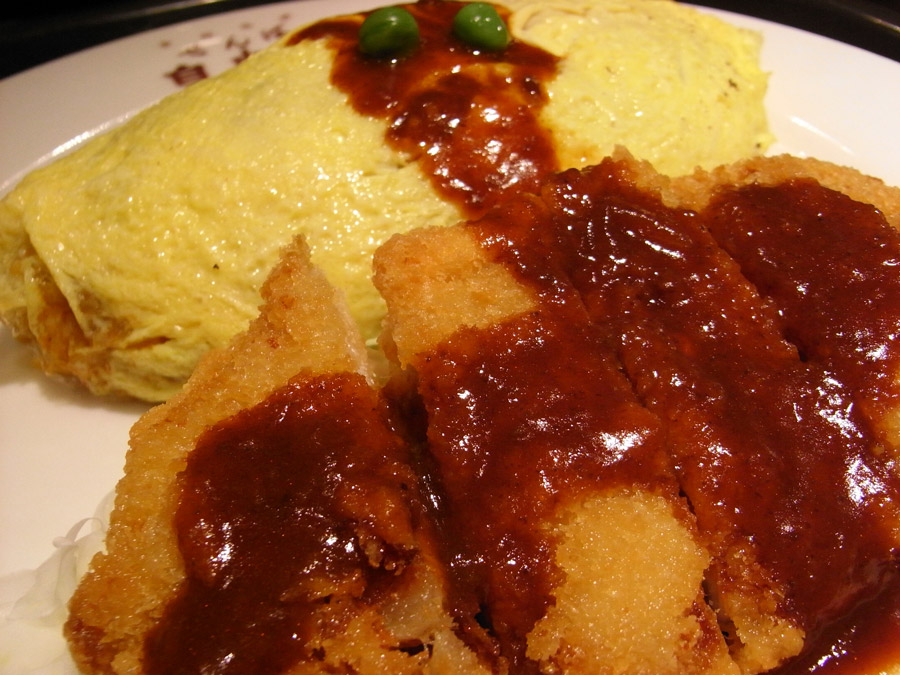
One of the specialities of Fukui is the Echizen soba, which you can find in the city of Echizen.
The surrounding environment and climate make it suitable to grow buckwheat in order to make the buckwheat noodles for soba. Echizen soba is usually eaten cold with grated radish.
Another popular local dish in Echizen is Volga rice. Although the origin of the dish and its name is not known, it sounds delicious — it is a dish with pork cutlet and omelette rice, with a special sauce poured over it.
Yamanashi

Yamanashi’s representative dish is called Hoto, a dish made by stewing vegetables and flat noodles in a miso-based broth.
The thick and flat noodles soak up the flavour of the broth and this makes for a warm comforting dish during the cold season.
Another noodle dish, Yoshida udon is one to try in Fujiyoshida City in Yamanashi.
The udon noodles used in this dish are thicker and firmer than usual. Different stores tend to add their own toppings, and some even use horse meat!
Nagano
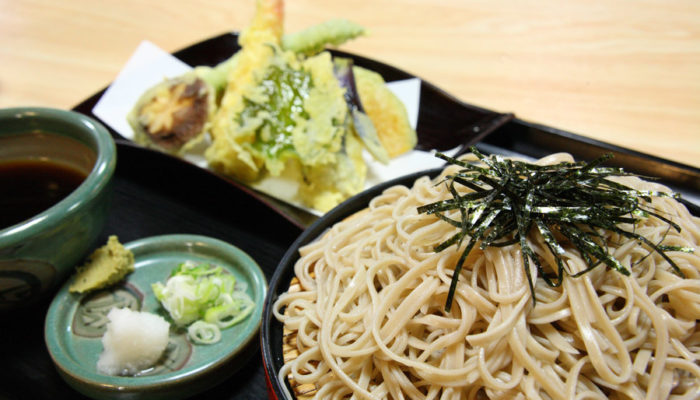
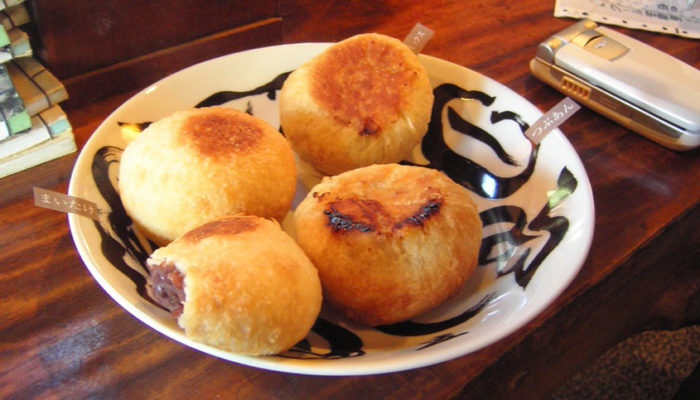
Similar to Fukui, the climate in Nagano is perfect for growing buckwheat, and so, it comes as no surprise that one of their specialty dishes is soba-based — namely, Shinshu soba. Not all soba noodles can carry the trademark “Shinshu” name, as it is reserved for those that contain 40$ or more buckwheat flour. The name itself is a guarantee of its quality.
Another buckwheat special, oyaki is a special type of dumpling made from a dough made of buckwheat. The dumplings contain a variety of fillings such as eggplant, daikon, or even red bean paste, and are baked, steamed or fried.
Gifu
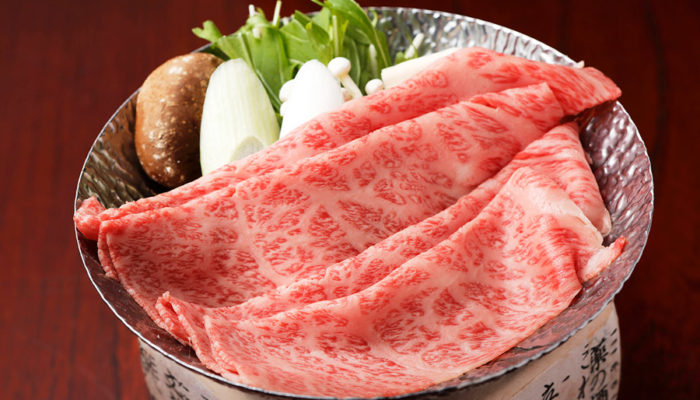
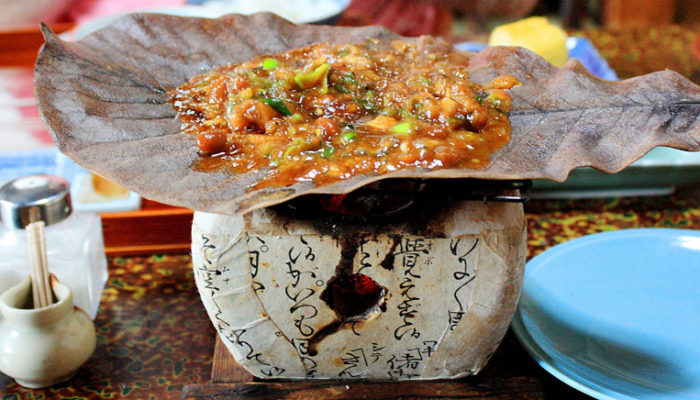
For many, Hida beef is the food that comes to mind when talking about Gifu. Hida beef is beef that is from Japanese black beef cattle raised in Gifu for at least 14 months, and is one of the highest quality beef you can find in Japan.
Hoba Miso is a local dish also from the Hida region. “Hoba” refers to a magnolia leaf, which is placed over a fire and baked with miso, spices and green onions and mushrooms on top. The sweet taste of the Hoba is transferred to the food during the cooking process, and goes perfectly with rice.
Shizuoka
If you’re ever in Shizuoka, you can’t miss out on trying some eel (Kabayaki Unagi). Lake Hamana in Shizuoka is famous for producing eels, where the eel is dipped in a soy sauce based seasoning and grilled. It’s simply delicious!
Next on the menu is Shizuoka oden, a stew containing fish cakes, daikon, boiled eggs and other ingredients in a rich alty broth. Unlike other oden, Shizuoka oden uses beef tendon and dark soy sauce for the broth. Like many of the dishes described, Shizuoka oden is perfect for the cold winter season.
Aichi
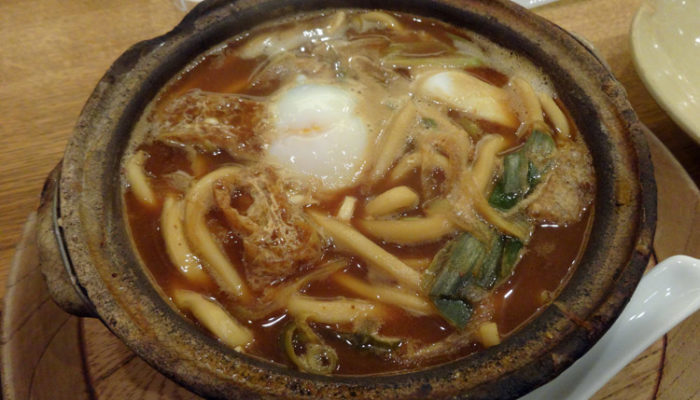
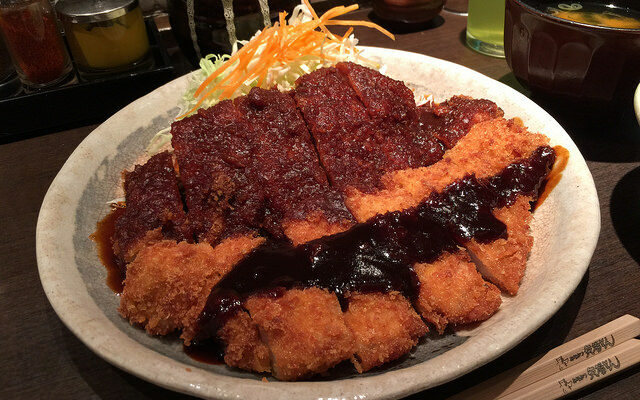
Last, but not least, we come to Aichi. Aichi is known for miso nikomi udon, an udon dish that is cooked in a thick miso soup (especially Hatcho miso from Nagoya) and eaten with various other ingredients, such as tofu, green onion, carrots and other vegetables.
Finally, there’s miso katsu, where freshly fried pork cutlet is sprinkled with red miso sauce and served with rice and crispy cabbage. A must-try comfort food in Aichi!
It would take far too long to cover all of the regional Japanese foods in this article, so let us take a pause here. More on the Kansai, Chugoku, Shikoku and Kyushu prefectures coming in part 2…



































